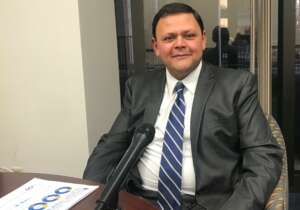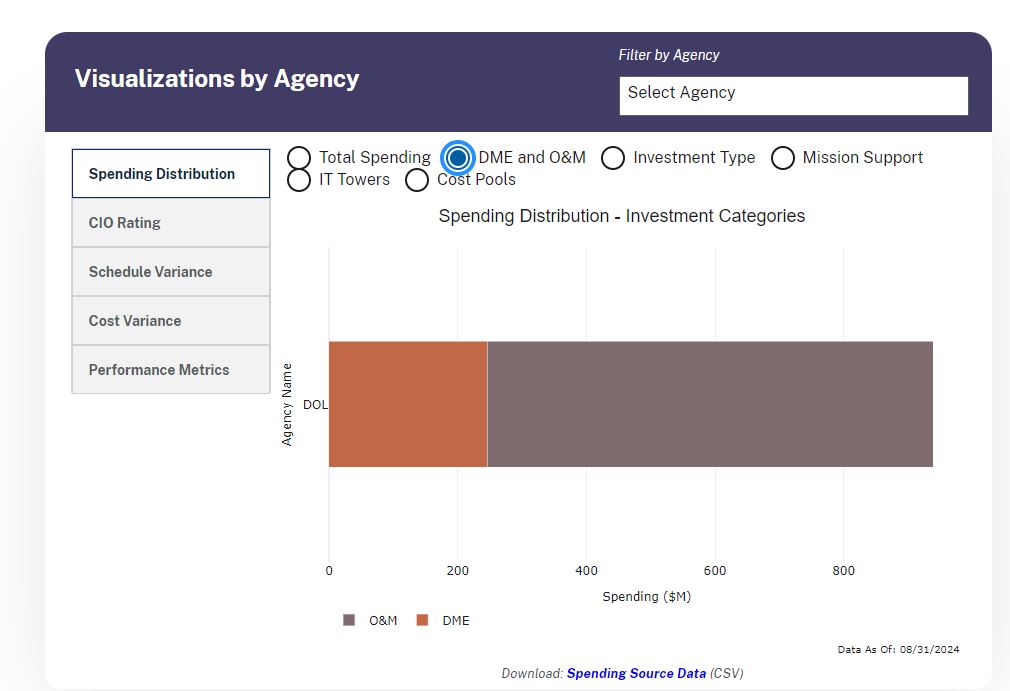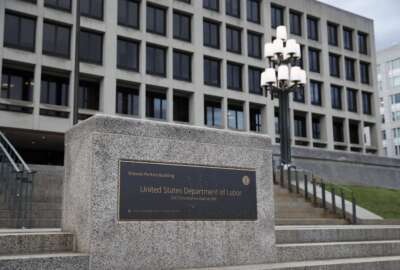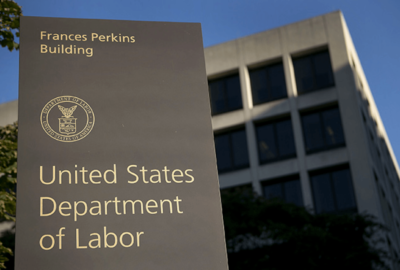Labor found a new way to fund its IT modernization efforts
Gundeep Ahluwalia, the former Labor Department chief information officer, said in an exit interview that the agency reduced its spending on outdated technology.
The Labor Department rarely found success in making its case to Congress for more funding for technology upgrades.
Over time, that lack of funding meant Labor’s technical debt grew and mission areas suffered.
But Gundeep Ahluwalia, the now former Labor chief information officer, saw an opening to convince lawmakers to give the agency some IT modernization funding relief.

“The Modernizing Government Technology (MGT) Act came along and there was no light between me and my [deputy assistant secretary for budget and performance]. We were attached at the hip. We formed the working capital fund. We made this proposal together up on the hill for the first time,” said Ahluwalia, who is now the executive vice president and chief innovation officer at NuAxis after leaving Labor in late August, on Ask the CIO. “The first time I went to Capitol Hill, and I said, ‘I have 50 legacy applications that need to be reformed. They affect Wage and Hour. They affect the inspection agencies. They affect our Office of Labor Management Standards, which oversees the unions across so this is bipartisan. If you want mission delivery, then you need to start giving us some seed money and some authority to do it.’ So that was the first time where we didn’t ask for more money, and their ears perked up.”
That relationship between Ahluwalia and Geoff Kenyon, Labor’s deputy assistant secretary for budget and performance, enabled lawmakers to better understand what the agency wanted to do. They were requesting the authority to create a working capital fund to collect “leftover” money at the end of the year and use it for specific IT modernization projects. The MGT Act created the ability to create these particular working capital funds, but the authorizers and appropriators had to agree to it in law before any agency could implement it. So far only Labor, the Small Business Administration and the Office of Personnel Management have received that approval. Several other agencies, including the Treasury Department and the Agency for International Development, have asked but been denied the ability to create a MGT Act IT working capital fund.
Congress increased Labor’s IT savings account
“It was also apparent to me that the authorizers and the appropriators had never seen these dollars at work. We did federal tech day. That was the first tech day, where all of them came in. They flew drones and OSHA showed them how the drones are flown. The folks in worker’s compensation showed them the new system that they were building, the H-1B program, H-2A program showed them how their systems worked, and that was the first time, I think, they got the taste of like, ‘Hmm, there’s a good thing going here, and we don’t have to give them money. We can just give them an authority that they can get these expired funds in one place.’ And the next year we got the authority, and it was capped at $18 million a year.”
A few years later, Congress increased Labor’s IT working capital fund cap to $36 million a year after seeing the impact of the program.
Ahluwalia, who left as the CIO in August after eight years, said he and Kenyon briefed lawmakers quarterly and gave them mechanisms to oversee how Labor was using the funding. One example of that oversight came in the form of the list of 50 applications Ahluwalia initially said needed modernization. Lawmakers asked for updates on progress against that initial list.
“We continued doing federal tech days where they would come in and experience that the legacy system, is now gone,” he said. “It also changed the entire conversation with the program areas and the CIO shop. Otherwise, I was always going to the program area and saying, ‘you need to modernize. And by the way, this is how much I’m going to tax you.’ But I now said, ‘I will give you X amount of money if you bring in the same amount of money. And let’s now increase the velocity of a transformation of your mission, application.’ It’s a different conversation.”
Another big change brought on by this collaboration and coordination effort with the budget office and lawmakers is Labor’s annual IT modernization funding is now two-year money. Previously, Labor’s funding would expire in a year.
Ahluwalia said over the last three-plus years since Labor received IT working capital fund authority, it has turned its IT spending around. When he got to Labor in 2016, the agency spent about 90% of its now $939.1 million IT budget on operations and maintenance (O&M) and 10% development, modernization and enhancement (DME) projects.
Today, Labor spends about 26% of DME and 74% on O&M, according to the Federal IT Dashboard.

In addition to the IT working capital fund, Ahluwalia figured out an approach that resonated with the Technology Modernization Fund (TMF) board, which led to Labor winning six awards.
These ranged from receiving $3.5 million to transition the labor certification process for all visa types from paper to digital e-certification to $15.1 million to help accelerate the deployment of a secure access service edge (SASE) solution to provide connectivity, consistent security and optimized user experience to its employees, partners and the public.
“Between the TMF money and the expiring funds authority, in the last three years, we’ve got $150 new million over three years as seed money to replenish and change the entire legacy digital infrastructure,” Ahluwalia said. “We have no mainframes anymore. We don’t have any old technology. We have some, but it’s very small and is already in a development cycle because of these resources that are afforded through TMF or through the expiring funds authority. That’s another legacy that I have left at the at the department that’ll keep the portfolio healthy. You have the people who are focused on mission, you have the infrastructure and you have the funding mechanisms that’ll keep coming every year in order to build new technologies.”
Ahluwalia said the approach he took isn’t specific to Labor, but one any agency can follow.
“They have to invest in their relationship with the budget folks. They have to invest in their relationship with the chief procurement officer. These are relationships that are extremely important for you to manage your IT spend and get the most value out of it, and when you make proposals together in front of the hill, they will listen,” he said. “But if your budget folks are not at the table and you’re alone and you’re trying to sell some cloud environment to the appropriations staffers, they’re going to roll their eyes and ignore you. When I gave an IT strategy, it’s how we can get out of this technical debt. My budget folks are sitting next to me and said, ‘Yes, and I will set up the working capital fund and I will make sure that the money we sweep into it will only be used for IT modernization and nothing else.’ That gave the comfort to these folks.”
Ahluwalia added he also worked on his relationships with the Federal CIO Council as well as with the Office of Management and Budget.
“You have to do events where folks can actually see the IT and it becomes real for them. They can experience the digital transformation, rather than some nebulous slide deck that may or may not resonate,” he said.
Copyright © 2024 Federal News Network. All rights reserved. This website is not intended for users located within the European Economic Area.
Jason Miller is executive editor of Federal News Network and directs news coverage on the people, policy and programs of the federal government.
Follow @jmillerWFED







